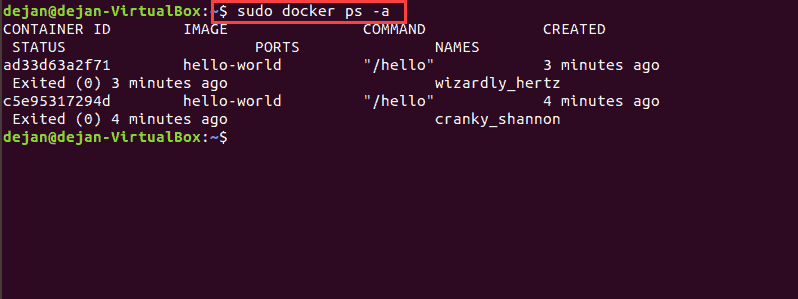

- #DOCKER RUN IMAGE AND ATTACH HOW TO#
- #DOCKER RUN IMAGE AND ATTACH APK#
- #DOCKER RUN IMAGE AND ATTACH CODE#
Modifying the actual Dockerfile of the image you want to change.

Using the image that you want to modify as a base image and build a child image.There are two ways you can use a Dockerfile to modify an image. So if you were to add a layer to the image, you can simply add another Dockerfile instruction to it, to remove one you would remove a line and to change a layer, you would change the line accordingly. Now since each Dockerfile command represents one layer of the image, modifying each line of a Dockerfile will change the respective image as well. Modifying a docker image essentially means modifying the layers of an image. Method 1: Modifying docker image through the Dockerfile I'll explain both methods, and at the end, I'll also add which use case would be better for the method in context.

#DOCKER RUN IMAGE AND ATTACH APK#
articles/Modify a Docker Image on modify-docker-images took 12sī997f897c2db 10 seconds ago /bin/sh -c #(nop) ENTRYPOINT ["python3" "-c… 0BĮe217b9fe4f7 10 seconds ago /bin/sh -c apk add -no-cache python3 43.6MBĢ8f6e2705743 35 hours ago /bin/sh -c #(nop) CMD 0B Īnd then using the command docker image history on the built image. You can confirm that by building the image: docker image built -t dummy:0.1. Since there are a total of three Dockerfile commands, the image built from this Dockerfile, will contain a total of three layers. For example, consider the following Dockerfile: FROM alpine:latestĮNTRYPOINT What exactly is modifying a docker image?Ī container image is built in layers (or it is a collection of layers), each Dockerfile instruction creates a layer of the image. In previous articles we have discussed updating docker container and writing docker files.
#DOCKER RUN IMAGE AND ATTACH CODE#
The code below performs a basic arithmetic operation that results in a value of 10.I presume you are a tad bit familiar with Docker and know basics like running docker containers etc. Create a file for your project named Dockerfile, and paste the code below into the newly created Dockerfile. You’ll build a basic arithmetic solution as a sample Docker application via a command-line environment.ġ.

#DOCKER RUN IMAGE AND ATTACH HOW TO#
Related: How to Install and Use Docker on Ubuntu (In the Real World) Building a Base Docker Applicationīefore jumping to exporting or saving Docker containers and images, you first need to build an application you’ll use for sharing purposes.


 0 kommentar(er)
0 kommentar(er)
